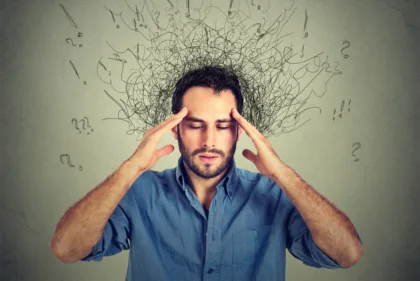Introduction
Anxiety disorders are among the most common mental health conditions, affecting millions of people worldwide. Whether you’re struggling with generalized anxiety disorder (GAD), panic disorder, social anxiety disorder, or a specific phobia, seeking therapy for anxiety can be a crucial step in managing your symptoms and improving your quality of life. In this article, we’ll explore the different types of therapy available for anxiety disorders and how they can help you cope with anxiety and panic.
Cognitive-Behavioral Therapy (CBT) for Anxiety Disorders
Cognitive-behavioral therapy (CBT) is one of the most effective forms of therapy for anxiety disorders. CBT is a type of therapy that focuses on identifying and changing negative thought patterns and behaviors that contribute to anxiety. By learning to recognize and challenge these thoughts, you can develop healthier coping mechanisms and reduce your anxiety levels.
CBT for anxiety typically involves several components:
-
Cognitive restructuring: This technique helps you identify and challenge the negative thoughts that fuel your anxiety. By learning to reframe these thoughts in a more realistic and balanced way, you can reduce their impact on your emotions and behavior.
-
Exposure therapy: This technique involves gradually exposing yourself to the situations or objects that trigger your anxiety, in a safe and controlled environment. By facing your fears, you can learn to manage your anxiety and build confidence in your ability to cope.
-
Relaxation techniques: CBT often incorporates relaxation techniques such as deep breathing, progressive muscle relaxation, and mindfulness meditation to help you manage physical symptoms of anxiety and promote a sense of calm.
Other Types of Therapy for Anxiety Disorders
While CBT is one of the most well-researched and effective treatments for anxiety disorders, there are several other types of therapy that may be helpful, depending on your specific needs and preferences.
Psychodynamic Therapy
Psychodynamic therapy is a type of talk therapy that focuses on exploring the unconscious thoughts, feelings, and experiences that may contribute to your anxiety. By gaining insight into these underlying factors, you can develop a deeper understanding of your anxiety and learn to manage it more effectively.
Acceptance and Commitment Therapy (ACT)
Acceptance and Commitment Therapy (ACT) is a type of therapy that emphasizes accepting and embracing your thoughts and feelings, rather than trying to eliminate them. By learning to observe your anxiety without judgment and focusing on your values and goals, you can develop a greater sense of flexibility and resilience in the face of anxiety.
Mindfulness-Based Therapy
Mindfulness-based therapy incorporates mindfulness meditation and other practices to help you develop a greater awareness of your thoughts, feelings, and bodily sensations. By learning to observe your anxiety with curiosity and compassion, you can develop a greater sense of calm and perspective.
Choosing the Right Therapy for Your Anxiety Disorder
With so many different types of therapy available, it can be challenging to know which one is right for you. The best approach is to work with a mental health professional who can assess your specific needs and tailor a treatment plan to your unique situation.
When choosing a therapist, it’s essential to find someone who has experience treating anxiety disorders and who you feel comfortable working with. You may need to try a few different therapists or types of therapy before finding the right fit, but don’t give up – with persistence and patience, you can find an effective treatment that works for you.
Coping with Anxiety Between Therapy Appointments
While therapy can be a powerful tool for managing anxiety, it’s important to remember that it’s not a quick fix. Anxiety disorders often require ongoing management and self-care, even between therapy appointments. Here are some strategies you can use to cope with anxiety in your daily life:
-
Practice relaxation techniques: Incorporate deep breathing, progressive muscle relaxation, or mindfulness meditation into your daily routine to help manage physical symptoms of anxiety.
-
Challenge negative thoughts: When you notice negative thoughts or worries, try to reframe them in a more realistic and balanced way. Ask yourself, “Is this thought helpful or accurate?”
-
Face your fears gradually: While it’s important not to avoid your fears altogether, it’s also important not to push yourself too hard. Start with small, manageable steps and work your way up to more challenging situations.
-
Take care of your physical health: Regular exercise, a healthy diet, and adequate sleep can all help reduce anxiety and improve your overall well-being.
-
Connect with others: Talking to friends, family members, or a support group can help you feel less alone and provide valuable perspective and encouragement.
Conclusion
Anxiety disorders can be challenging to live with, but with the right treatment and support, it is possible to manage your symptoms and improve your quality of life. Whether you choose cognitive-behavioral therapy, psychodynamic therapy, or another type of therapy, the most important thing is to find an approach that works for you and to stick with it.
Remember, seeking help for anxiety is a sign of strength, not weakness. By taking steps to prioritize your mental health and well-being, you are investing in a brighter, more fulfilling future for yourself. If you’re struggling with anxiety, don’t hesitate to reach out to a mental health professional for guidance and support. With the right tools and strategies, you can learn to manage your anxiety and live a full, meaningful life.
Anxiety Disorder Therapy: Effective Treatments for Generalized Anxiety Disorder and Other Types of Anxiety
1. What is anxiety disorder therapy?
Anxiety disorder therapy refers to the various treatments and therapies used to help individuals manage and overcome anxiety disorders, including generalized anxiety disorder and other types of anxiety. These therapies can include cognitive-behavioral therapy (CBT), exposure therapy, talk therapy, and more.
2. What are the most common types of anxiety disorders treated with therapy?
The most common types of anxiety disorders that are treated with therapy include generalized anxiety disorder, social anxiety disorder, panic disorder, and phobias. Therapy can help individuals with these conditions manage their symptoms and improve their quality of life.
3. How does cognitive-behavioral therapy (CBT) help with anxiety?
Cognitive-behavioral therapy is a type of therapy that helps individuals identify and change negative thought patterns and behaviors that contribute to their anxiety. By working with a therapist, individuals can learn new coping skills and strategies to manage their anxiety more effectively.
4. What are the common symptoms of anxiety that therapy can address?
Common symptoms of anxiety that therapy can help address include excessive worry, restlessness, irritability, sleep disturbances, and difficulties concentrating. Therapy can assist individuals in developing skills to manage these symptoms and reduce their impact on daily life.
5. Are there effective treatments for generalized anxiety disorder?
Yes, there are several effective treatments for generalized anxiety disorder, including therapy such as CBT, relaxation techniques, and medication. A comprehensive treatment plan tailored to the individual’s needs can help manage symptoms and improve overall well-being.




